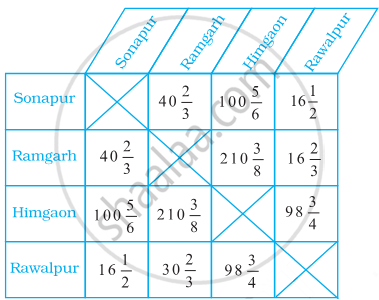Advertisements
Advertisements
Question
Write four more rational numbers in the following pattern:
`(-3)/5, (-6)/10,(-9)/15, (-12)/20, ...`
Solution
The given rational numbers are `(-3)/5, (-6)/10,(-9)/15, (-12)/20, ...`
A closer look at the given rational numbers shows that the next rational number is formed by adding 3 to the numerator of the previous rational number and adding 5 to the denominator.
Hence, there are 4 other rational numbers of the same patterns.
`(-12 - 3)/(20 + 5) = (-15)/25`
And, `(-15 - 3)/(25 + 5) = (- 18)/30`
And, `(- 18 - 3)/(30 + 5) = (- 21)/35`
And, `(-21 - 3)/(35 + 5) = (-24)/40`
Hence, there are 4 more rational numbers of the given patterns
`(- 15)/25, (- 18)/30 , (- 21)/35 "and" (-24)/40...`
APPEARS IN
RELATED QUESTIONS
Which of the following pairs represent the same rational number?
`1/3 "and" (-1)/9`
Fill in the box with the correct symbol out of >, <, and =.
`(-4)/5square(-5)/7`
Fill in the box with the correct symbol out of >, <, and =.
`1/(-3)square(-1)/4`
Write three rational numbers that lie between the two given numbers.
`2/7, 6/7`
`(x + y)/2` is a rational number.
The two rational numbers lying between –2 and –5 with denominator as 1 are ______ and ______.
If x and y are two rational numbers such that x > y, then x – y is always a positive rational number.
The table given below shows the distances, in kilometres, between four villages of a state. To find the distance between two villages, locate the square where the row for one village and the column for the other village intersect.
If you drove from Himgaon to Sonapur and then from Sonapur to Rawalpur, how far would you drive?
Arrange the rational numbers `(-7)/10, 5/(-8), 2/(-3), (-1)/4, (-3)/5` in ascending order.
‘a’ and ‘b’ are two different numbers taken from the numbers 1 – 50. What is the largest value that `(a - b)/(a + b)` can have? What is the largest value that `(a + b)/(a - b)` can have?
